We’ve talked a lot in the last few weeks about the importance of images and visuals in your marketing, how to make images and visuals, different kinds of images and visuals like illustrations, pull-quotes, diagrams, charts and graphs and so on. So today we’re going into a bit more Advanced Visual Storytelling.
But how do you know what type of image to use when?
Rather than simply throwing more images around (which, admittedly, would be an improvement if you’re not using enough of them,) how can you be STRATEGIC with using images in the most compelling way at the best place in your marketing program?
We talk about that today . . .
![]()
![]()
![]()
Transcript – Advanced Visual Storytelling
Paula Williams: Welcome to aviation marketing hangar flying episode number 32, Advanced Visual Storytelling. So, I’m Paula Williams.
John Williams: I’m John Williams.
Paula Williams: We are ABCI. And ABCI’s mission.
John Williams: To help you ladies and gentlemen sell more stuff in the aviation world.
Paula Williams: Absolutely. So we’re using a hashtag, #AvGeekMarketing.
That’s the pound sign, and then AvGeekMarketing. And if you are in Twitter or Instagram or any of those bizarre little programs, then you know what that does is it helps us find your comments more easily. And we promise we will reply to every tweet and that way you could be part of the conversation if you have comments or want to mention something or share something or disagree with us, heaven forbid.
Or anything along those lines. Okay, so one of the things we talk about is we never want to do Random Acts of Marketing, right? We want to make sure that we’re knowing what we are doing and why. So we’ve been talking for the last several weeks about images, right? And before that we we’re talking about branding.
So a lot of stuff about visuals and how you use them and when you use them and so on. And today we’re going to kinda put that together into the marketing system phases and talk about what kinds of images you might use in your Phase One and your Phase Two and your Phase Three to meet the objectives that you need to meet in each of those phases so that you’re not just randomly throwing pictures around.
[LAUGH] And hoping for the best, right?John Williams: Exactly.
Paula Williams: Okay, cool, so in a marketing system which is the opposite of random acts of marketing, we have Phase One which is advertising and prospecting. Phase Two, which is building credibility and closing sales. And Phase Three, which is referrals, recaptures, and resales, right?
John Williams: That’s what we’ve been espousing forever.
Paula Williams: Forever, exactly. And if you pick up any marketing textbook, you’ll find something very similar to this. The difference usually between ABCI and anybody else you talk to about marketing is the emphasis. So, we placed a lot of emphasis on Phase Two and Phase Three.
We think you should use at least 50% of your marketing budget for something other than advertising and prospecting, which doesn’t mean that advertising and prospecting-
John Williams: Well, you know, it is not only the difference. The other difference is clarity. When you see something from us, it’s extremely clear, as opposed to trying to dig pieces and parts out of 350 pages of textbook.
Paula Williams: [LAUGH] Exactly. So there’s a lot of differences, but one of the key differences between ABCI and other people is that most marketing agencies focus on Phase One. In fact a lot of people think that marketing and advertising are the same thing, when really advertising is just a very small part of what you need to do with marketing.
Right, John?
John Williams: Absolutely.
Paula Williams: Okay, cool. So Phase One. We’ll start with that. Advertising and Prospecting. How can you use visuals to make your Phase One work better? Okay, now some of the things that we have in Phase One are things like podcasts, webinars, trade shows, public speaking, Facebook ads, prospecting packages, postcards.
All of those lend themselves very well to visuals, right?
John Williams: And more things besides those. Those are just the biggies.
Paula Williams: Exactly, but since we’re talking about visuals today, there’s a lot of attention getting that can happen in all of those features. So, you can have a great podcast icon and there are some guidelines for what that should look like.
It should look really good on a cell phone. It has to look really good, really small. Webinars, we recommend that people use their branding on their webinars. Make sure that they’ve got their logo on every slide so that people don’t just steal your concepts and run away with them with a screenshot and things like that.
Trade shows and public speaking is probably the one that is the most interesting but you can always put logos on your slides, on your handouts. Make sure those things are branded and so on. And trade shows the same thing. You can make sure that you booth makes it clear who you are and so on.
Facebook ads are very small. You want to make sure you’re using good images there. Prospecting packages. You want to make it really clear who that’s from. And, postcards are probably the most visual direct mail because there’s no envelope. So you’re looking right at an image usually as soon as you get a postcard.
John Williams: You notice that we left magazines and newspapers off this because they’re basically expensive And the readership is down.
Paula Williams: Right, I mean we can go on for miles and miles and miles of little blue arrows but the concepts that we’re explaining are the same, no matter what you are doing with your advertising.
So in our webinar last week we talked about four different types of visuals, we talked about illustrations, diagrams, pull quotes and graphs and tables, right?
John Williams: True.
Paula Williams: Okay, so, of those four, and of course rules are meant to be broken, but we have to have rules to start with so that we know what we’re talking about.
Of those four, which do you think would be the most effective in Phase One?
John Williams: You’re the doctor. I’m just the nurse’s aid. [LAUGH].
Paula Williams: Okay. Illustrations. We talked about how illustrations should show some kind of emotion. The kind of thing that we’re talking about is stock photography of somebody tearing their hair out because their plane’s broken.
Or somebody banging their head against a desk because they’re frustrated because their software isn’t working.
John Williams: So what’s the difference between an illustration and a picture?
Paula Williams: Illustrations include pictures, right? You’re illustrating a concept, right? So, of the four different categories, which would you put pictures in? We’ve got illustrations, diagrams, pull quotes and charts and graphs.
John Williams: You could put a picture in all of those.
Paula Williams: You could, but I would find it really weird to have a picture in a diagram, that’s kind of funny, or a picture in a pull quote or a picture in a table or chart.
John Williams: Yeah, you might find it funny but some other people may not.
Paula Williams: Yeah, that’s true. There are some creative uses of that, but usually when we’re talking about photographs or-.
John Williams: That’s why you’re the doctor and [CROSSTALK] have you tell us what’s going on.
Paula Williams: And illustrations. Usually, photographs fall into that first category. So, and usually the purpose of an illustration is to demonstrate an emotion, right?
John Williams: Is that right?
Paula Williams: Mm-hm.
John Williams: Okay.
Paula Williams: Okay, so.
John Williams: Demonstrate an emotion.
Paula Williams: To be about. That’s the purpose of art, right? Is to evoke an emotion or to invoke a reaction.
John Williams: A reaction I would believe.
Paula Williams: Okay.
John Williams: Emotion, I would guess that’s part of it, so.
Paula Williams: Right, exactly. And so the emotions that you might want to evoke as a advertiser or a marketer in this phase are things like what your product is going to do for people, or what problem it’s going to solve, right?
John Williams: Or you’ve got to be kidding me. [LAUGH]
Paula Williams: Yeah. In fact, we showed that 1984 Apple Advertisement that run during the Superbowl and part of the reason that it was so impactful is because it was about the customer not about the product. And they could have gone on and on and on about this has the most, this has a user interface.
All of those things were revolutionary at the time. But they talked about their customers and it’s one of the things that has really makes the difference between professional advertising and people who are just trying to say, here’s what my product is. You might want it or you might not.
But you really want to make your advertisements about your customer and how they will use your product, or how they can solve a problem or make their life better with your product. So, of those things, the most compelling is an illustration. Of course you can use the others, but if we wanted to break down some rules of what do you start with in Phase One the most powerful thing you can start with is an illustration.
John Williams: Cool.
Paula Williams: Cool, that make sense?
John Williams: Sure.
Paula Williams: All right. Okay. So we talked about those things. We talked about having a call to action in every one of our advertisements right?
John Williams: Absolutely.
Paula Williams: So if you have a call to action with a very evocative picture or illustration that cause of action will be something will be something like download a tip sheet or a book or a call us today, or get a free consultation, or take whatever the next step is in your sales process.
So you get all these emotion worked up and then you gotta get them something to do [LAUGH] and not just leave them hanging right. Okay.
John Williams: Something easy to do.
Paula Williams: Something easy to do because once again you’re at the beginning of a relationship so you don’t want to say buy my $5000 product when they have never heard of you before.
You’d have to evoke a lot of emotion to make that happen and that’s usually not going to happen in that first interaction so.
John Williams: Even if your product is $10 million, you still have to take easy steps along the way because, if it’s 10 million bucks, chances are they’ve heard of you and they’re interested and just doing maybe market research to figure what they really want to buy.
Paula Williams: Absolutely. That’s absolutely correct. So here’s an example of an illustration that evokes an emotion, right? So we talked about an article that we’d written, and that was a pre-call checklist. So it’s great information, but it was all text and we weren’t getting a whole lot of traffic to it on our website.
So what we did is we created an advertisement for it that was an illustration of an emotion. So, we have a guy standing in front of a red phone looking a little anxious [LAUGH] about making phone calls. So what this does is evokes an emotion of, a lot of us have felt that way.
I really don’t want to make those sales calls. And that is something that a lot of people, especially our target customers going to empathize with. And, this at itself is a call to action because it’s clickable. If we use it in social media, it’s a link to that article. So all we’re asking for is come visit the article, and take the next step in our sales process which is learn about this checklist.
And learn a little bit more about sales and how ABCI might help you with sales. So that’s how an illustration can be used in phase one. To get people to take the next step. All right, Pull Quotes can also evoke an emotion. We put this Pull Quote together from that same article as sales call check list.
If the answer to any of these question is no, postpone or cancel the sales call. There’s no point in wasting our time where client’s time on a sale we won’t win or even worse on a project we do win that causes problems.
John Williams: And here’s why you’re the doctor.
Paula Williams: Okay.
John Williams: Because when we were talked about this but when I first saw this [COUGH] being a finance kind of guy, and trying to learn this marketing stuff, I figure that the Pull Quote was the thing in red, when actually you said it’s the whole thing in the blue box.
Paula Williams: Yeah, the whole thing in the blue box and this is an audio podcast so that’s why I read the Pull Quote to you, but-
John Williams: The stuff in red says postpone or cancel the sales call.
Paula Williams: Exactly.
John Williams: And it’s highlighted and it’s a larger font and I thought, so that’s it.
Paula Williams: Yeah. So a Pull Quote is just a smaller portion of a larger piece of work. So, this whole blue box is a Pull Quote from the article. The red is Pull Quote actually from this little ad. But what it does is it evokes an emotion. You look at this and you go, wow.
You’re giving me permission to postpone or cancel a sales call? That captures my attention. I want to find out more about that. And the emotion might just be curiosity, in this case. So this is not as powerful, I don’t think, as our first example. But it is another way and it is a really way to make a lot of the content on your site get a lot more traffic to it by using Pull Quotes.
And using these in places where people are likely to see them. And then go to your website. Social media is a great example but you could use this in a news letter. You can use this on a postcard. You can use this on any advertising media. So there’s two examples of ways to use images in your Phase One.
John Williams: True.
Paula Williams: What do you think? Does that makes sense?
John Williams: Thus far.
Paula Williams: Thus far, okay. And that is the important thing, is that it makes sense. So Phase Two, we talked about Phase One as advertising and prospecting are your very first interaction with a client. Now we’re moving on to Phase Two, which is, let’s say after they’ve clicked that article, downloaded a tip sheet, had a phone call with you, they’ve had some interaction with you but they aren’t yet to the point of writing the check.
This can be a long time in the aviation industry because a lot of times people have to wait for approval or they have to do research or they’re waiting for the opportunity to meet the resources whatever the situation is. A lot of things have to line up in the aviation industry and as a buyer in the aviation industry you know exactly what I’m talking about don’t you John?
John Williams: Yeah life gets in the way and so does business. You can be trucking along in your business knowing you need whatever the product is that you’re looking at and just simply run out of time by the end of the day to be able to talk to a sales guy.
Paula Williams: Exactly. So you’ve been in situations where it’s been months or even years from the time when you first became interested in a product or service, to the time that you actually made the purchase.
John Williams: Yeah, it took
John Williams: Well, as a matter of fact it took eight months from the time I first saw the sales guys first talked to me or sent me a postcard about my first airplane before I purchased it.
It was just life and business getting in the way. I wanted to do it. I was prepared to do it, had the money to do it. But, [LAUGH] it was just a series of things that got in the way. [COUGH]
Paula Williams: Exactly, so this doesn’t necessarily mean that you’re a terrible salesperson, or that your marketing is no good, or any of those things.
It just means that your customer’s not ready yet.
John Williams: Which to that point, just because the guy doesn’t buy right away, doesn’t mean you should come back to him with a lower price.
Paula Williams: Yeah. That will sometimes do the opposite of what you want, which is it’ll actually hurt your credibility.
Because they’ll think, well why didn’t you give me your best price the first time?
John Williams: Well, yeah, I mean. I am helping some folks. I am not a broker, okay? But I’m helping some folks, because they asked me to help them determine which model and manufacturer, and so forth of aircraft to buy.
Well because of that, I’ve talked to several aircraft manufacturers and some of them keep coming back to me and say, we got a real deal on this one now. We can knock off 1.1 million, and in a week or two later another 100,000, and I’m thinking, well wait a minute.
Paula Williams: Mm-hm.
John Williams: That’s not the way it works, with me anyway. [LAUGH].
Paula Williams: Yeah, if you could have bought it at the price it was offered earlier, you would have. But there’s a legal, or some kind of hurdle that needs to be-.
John Williams: There’s all kinds of things going on with this with these guys.
Paula Williams: Mm-hm.
John Williams: So, it just reinforced into me that lowering the price is not the reason you should have discourse with your customer, to understand what their reason for not buying is.
Paula Williams: Mm-hm.
John Williams: And 99.9% of the time it’s not going to be about money, particularly in aviation.
Paula Williams: Exactly, okay, so let’s go under the covers of phase two and look at some of the things that you can do while all of that stuff is happening on the client side that we don’t have a lot of control over, right? You can send them regular emails.
Not too regular of emails. You don’t want to drown their inbox, but you do want to be a regular presence. So once a week, tip of the week, or something along those lines, is usually welcome. Printed and mailed newsletters, we have never run into a situation where that is not welcome.
Those are, in fact, people complain when they don’t get them. So those are very well-received. And actually I was just reading some data yesterday from the American Marketing Association that said that printed and mailed materials are six times more effective than any electronic media. And that includes very, very targeted Facebook ads, which are kind of the thing right now.
John Williams: Having said that, if you don’t have a website and keep it up to date, then people wonder if you’re out of business or not.
Paula Williams: Absolutely, so you do need to do multiple media. If you’re only going to do one with the aviation industry, I’d suggest doing print rather than electronic, but everybody has to have a website these days at least.
John Williams: And back to my previous remark, that’s not just us talking. We have clients who have said they’ve had people come, [LAUGH] Calling and say, what’s up with your website? Are you guys going out of business?
Paula Williams: Cuz their website’s about four years old.
John Williams: Yeah.
Paula Williams: Using old technology and.
John Williams: And the guy said, well, no. And then they called us up and say, can you fix this?
Paula Williams: [LAUGH] Yeah, we need some work on our website, which is cool. So all of your material should be, that’s another thing, is you want everything to be coherent and branded similarly, so that they know this is the same website from the same company as the newsletter that I’m getting.
John Williams: Can’t over-emphasize in a, [LAUGH] In an integrated plan.
Paula Williams: Exactly. You can have social media conversations with your top ten most wanted customers. We recommend follow Fridays, where you take an hour and you look at your top ten most wanted customers. Look at what they’re doing on social media, reply, those kinds of things.
Because most of us are doing way too much publishing and way too little listening. It’s called social media for a reason. You really want to make sure that you are having an authentic relationship with people, and not just using it as a megaphone. So, that’s really important. And then direct mail promotions.
You can do that once a quarter, or something along those lines, where you’re offering a special that makes sense. Buy an airplane this week, and we will throw in service or something that is of value to somebody who’s making that particular purchase. Follow-up sales calls is required. Formal sales presentations as, usually they’re asked for.
They’ll say can you come in and talk to our board about that, and so on. So, often those are requested by the customer and then of course you make the sale. But let’s talk about what kinds of visuals do you use in phase two, of those four that we’ve talked about?
We’ve talked about illustrations, we talked about poll quotes, we talked about, jeez, what was the third one?
John Williams: So what’s wrong with using them all depending upon the situation?
Paula Williams: Not a darned thing. But again, we want to take some of the random out of this and give people some guidelines of where to start.
John Williams: All right, so then do that knot.
Paula Williams: Okay, so we’ve got illustrations, we’ve got poll quotes, we have got diagrams and we’ve got charts and graphs.
John Williams: Yes.
Paula Williams: So of those things, we’re going to go with diagrams. Because at this point they’ve already heard of you, you’ve already got their attention.
John Williams: Good point.
Paula Williams: But you want to help them understand more about your product, because the more they understand the more comfortable they become making that purchase decision.
John Williams: So, phase one’s sort of an overview. Phase two is more of a detail oriented stuff.
Paula Williams: Exactly. So there’s usually a lot that people have to learn before they feel comfortable writing that check.
And anything that you can illustrate with a diagram, usually people can digest that information much more quickly than they could the same amount of text. People digest that very easily. A lot of aviation people are very visual, so it actually works better for them than trying to read a page of text and understand what you’re trying to say.
So think about all of the things that your customer needs to know before they make an educated buying decision, and think how can I show this rather than tell this? And make some illustrations that do that for you. So, you with me so far?
John Williams: Absolutely.
Paula Williams: Okay cool, all right.
And then Phase Three, Referrals, Resales & Recaptures. So after you’ve made the sale, most people stop, which is a huge mistake. Most of the money in aviation is made in phase three. We say this every time we talk about our marketing system. And that is because customers cost a lot less to acquire once you’ve made a sale to them.
It’s much easier to sell a second item, or a second time, or have them bring somebody in whose a referral, or any of those kinds of things. Aviation’s a small community, so people take each other’s opinions and experiences very seriously. And they say, how did things go with this company?
I’m thinking about doing that too. And they talk to each other a whole heck of a lot. Pilots are notorious for spending a lot of time with each other, taking each other’s opinions very seriously.
John Williams: Well, the other thing about this is, and I’m a prime example unfortunately, or fortunately, however you want to look at it.
Paula Williams: [LAUGH].
John Williams: I bought the first airplane and the guy didn’t Do this phase three and I bought the second air plane from a different person [CROSSTALK] from a different company.
Paula Williams: Wow, okay, so there’s a really good example and I was actually reading-.
John Williams: And they were both new aircrafts.
So it’s the same manufacturer but different sales organization.
Paula Williams: Man, I bet that first guy felt a little slighted.
John Williams: He didn’t keep up with me. I couldn’t remember how to get a hold of him.
Paula Williams: There you go. See, and I was actually reading an article yesterday about resales, recaptures and referrals, and one of the folks in our master mind group, Sean Buck, was talking about one of his customers who was a lawyer.
John Williams: [LAUGH] That’s right.
Paula Williams: And this guy had happy customers. He was winning a lot of cases for his customers, he was doing a bang up job, his customers were winning cases, they were making a lot of money, they were very happy. But he went through a list of 100 of his old customers and called them personally to ask them, how are we failing to get your return business or your referral business and things like that.
And out of the 100 people that he called, a really large number didn’t even remember who he was. And he had actually one guy that he had won $100,000 settlement that was really a difficult case and he called the guy up, expecting a warm reception and everything else, but the guy didn’t even remember who he was.
So a lot of these very busy business people have a lot going on in their lives and if you are just a means to an end to them, you can’t take it personally that they don’t remember you.
John Williams: What it means is you have failed in phase three.
Paula Williams: Exactly, so there’s a lot of things that you can do to make sure that they do remember you and to make sure that they have your contact information, and that they feel like they have a relationship with you and you’re not just a functionary in their life, you’re actually a human being.
And some of those things are like a new customer package where you send them some chocolates or popcorn or something that says we really appreciate your business. Here are some of the key things that you need to know, here’s a little card so that you have our customer service numbers, all of those kinds of things.
We talk about that in a lot more detail in some of our other materials. You can do a customer satisfaction survey once a year or at some point that’s [INAUDIBLE].
John Williams: When you spend several hundred thousand dollars [COUGH] or more [COUGH] excuse me, on an aircraft, then one would hope that the sales organization cold afford to do what she just said.
Paula Williams: Absolutely, or even if they buy a $20 product, you can at least a letter or an email that serves the same purpose and says here’s our customer service numbers, here’s some of the top five questions people have in their first week with us, those kind of things.
John Williams: Even where we go to buy fountain pens which, yes, we use fountain pens. They’re less than $100, but the guy that owns the store sends us an email once in a while that says, thank you very much and then are you having any troubles, is there anything else I can help you with?
Paula Williams: Yeah, actually he sends hand-written note cards, which is of course their business and nobody does that any more, which is what makes that so cool. But the name of the company actually is Tabula Rasa in Trolley Square in Salt Lake City. I think it’s a one of a kind sort of a place, but-.
John Williams: But he knows he’s got the phase three down.
Paula Williams: Exactly, and because he does something that nobody else does, he’s getting mentioned on a pod cast that he doesn’t even know about.
John Williams: [LAUGH].
Paula Williams: So you do something unusual and people will remember it. You can do follow up calls especially after a customer satisfaction survey to respond to some of the things that they mentioned, make sure all of the problems are resolved or to thank them and say, would you mind going on record or can we use your comments in our marketing materials?
People are usually perfectly fine with that. Thank you gifts, referral incentive packages, weekly emails, monthly printed newsletters, social media conversations, greeting cards, all of these things are really good ways to stay in touch with your customers. There’s no shortage of ideas, of ways to further your agenda once you have made that sale.
So in phase three, what sorts of things do you think might be useful as far as illustrations and types of visuals that you could use that are really.
John Williams: Based on our previous conversation, I would say more detail.
Paula Williams: More detail, exactly. So they already know you, they already like you, they already trust you.
So more details about what you do and other things that you do that maybe they bought one product from you, but you offer more than that. So tables and graphs are a really great way to let them know, you made a really smart decision when you bought from us and here’s why.
John Williams: But when you make tables and graphs, adhere to the KISS principle.
Paula Williams: Yep, keep it simple.
John Williams: And clear.
Paula Williams: And clear.
John Williams: Clarity and KISS.
Paula Williams: Yep, absolutely. So tables and graphs, and we explained in our last webinar that how every visual should communicate only one piece of data.
So if you have more than one piece of data that you want to communicate, you want to separate that into two tables or two charts or two graphs, or whatever.
John Williams: Exactly.
Paula Williams: Yeah, so you can use Excel, you can use Canva, you can use PowerPoint, you can use Keynote.
There’s lots of things that will make charts, graphs, tables, pie charts, other kinds of visual data for you that much more attractive than simply numbers or text.
John Williams: Yep.
Paula Williams: Another thing that you can do and we talked about this earlier is if there are some specific tables, and graphs and charts that illustrate your unique selling proposition or really key points in your sale process that’s really important for people to understand, you can always hire a graphic designer to make those even cooler for you, so that you can use those larger.
You can get them made in vector art, you can put them on posters, you can put them in your newsletters, other kinds of things. You want to use those everywhere that you possibly can. Another thing that we really like to do that we didn’t include in our five types of illustrations or four types of illustrations are cartoons.
If you do a regular series of anything, it gets more attention than one offs, and cartoons are just made for series. In fact, we did a cartoon for a client where the cartoon characters are basically inviting their customers to their booth at a trade show talking about what they would win if they aced a trivia quiz.
And then the next month, we’re putting another cartoon with the cartoon characters congratulating the winners. So you can really make these cartoon characters part of your sales staff.
John Williams: And they’re relatively inexpensive, for crying out loud.
Paula Williams: Exactly, so what this does is it just makes concepts a lot more visible and another thing that cartoons do and humour in general, is it lets you say some things that would be offensive any other way.
So in an example that we’re using here in the first frame, a broker asks and this is one for GC Aircraft or greatcircleaircraft.com for Dean Clo who has a fantastic sense of humour by the way.
John Williams: [LAUGH].
Paula Williams: So in the first frame, we’ve got an aircraft buyer asking three different pilots, what is the perfect air plane for me?
The first pilot says, a Gulf Stream 4. The next pilot says, a Citation 10. And the next pilot says a Challenger 604 and the owner says, why? And all the pilots say, because I know how to work the radios. So weirdly, people get attached to air planes because of very simple or very, I’m going to say, trivial reasons.
John Williams: Once you get tired of it and realize what you’ve gotta do to relearn a new box, the FMS, you’ll understand. [LAUGH].
Paula Williams: Exactly.
John Williams: Cuz some of them can be painful.
Paula Williams: Right, so that’s a point that we wouldn’t want to make any other way, because you might say well that’s insulting to pilots or whatever.
But everybody who looks at this cartoon that knows anything about pilots and knows about the industry is going to kind of nod their head and smile because this is kinda what goes on, right? So actions, you want to add more visuals to each phase of your marketing system. In phase one, you want to use illustrations based on emotions and problem solution kinds of scenarios.
In phase two, you want to use images that help prospects understand your key concepts. So remember, you’ve already got their attention, they just need to know more. So you want to use charts, graphs, diagrams and other things to make them more educated about your process or your product. In phase three, you want to use cartoons and other attention getting visuals that will keep you top of mind and explain maybe what else you sell.
So if you sell more than one product, they may not even know that. If they think you specialize in websites, they may not know that you also do printed newsletters or whatever your differences are there. Our freebie this week. We have a tip sheet about charts, graphs, tables, and diagrams, things to think about in putting those together and ways to get that done and that is available from ABCI1.com/charts.
It’s alpha, bravo, charlie, India number 1.com/charts.
John Williams: The Arabic number one.
Paula Williams: [LAUGH] Right, exactly. So go sell more stuff. America needs the business.
John Williams: Our good buddy Zig Ziglar said that.
Paula Williams: Exactly, and subscribe to our podcast. We are on Stitcher, Google Play and iTunes, of course.
Please subscribe and leave a review.
John Williams: And we’ll see you next time.
Paula Williams: Absolutely.
if (document.currentScript) { .



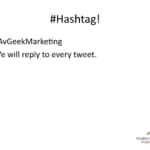
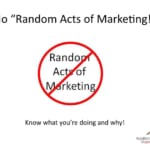

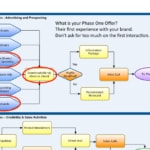


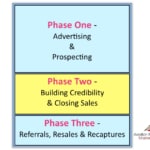

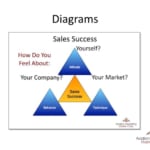
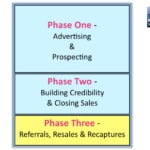
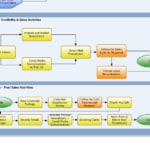

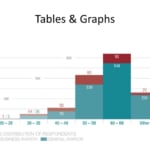

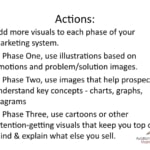

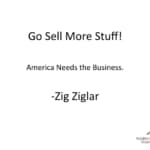
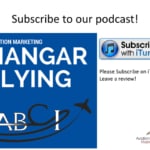





Leave A Comment